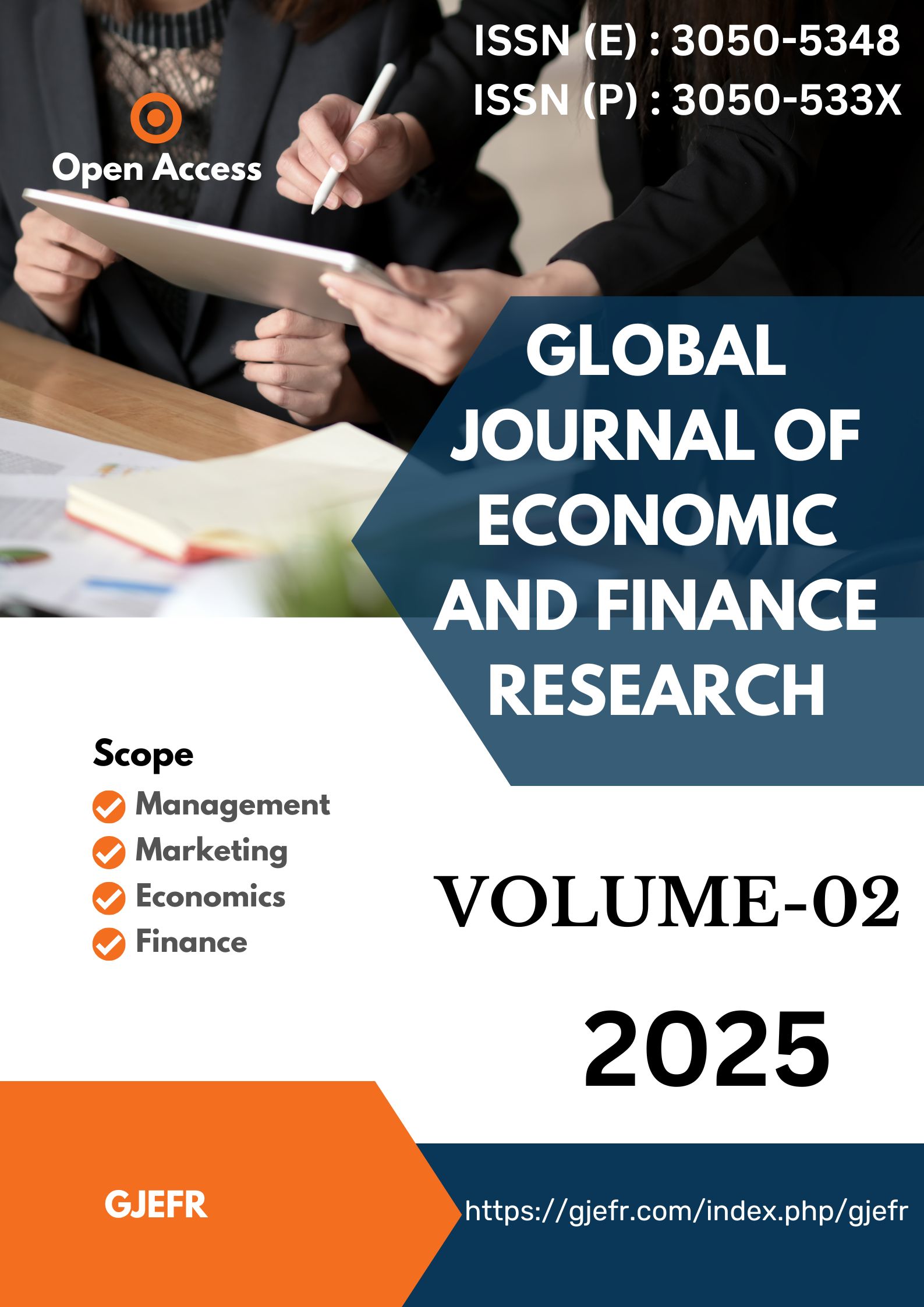Supply Chain Efficiency and Agricultural Product Sales: A Comparative Study of 2022 and 2023 Trends in USA
DOI:
https://doi.org/10.55677/GJEFR/02-2024-Vol01E5Keywords:
USA, Supply, Chain, Sales, Product, AgriculturalAbstract
This comparative study analyzes supply chain efficiency and agricultural product sales trends in the USA between 2022 and 2023. Utilizing a comprehensive dataset of agricultural products—including livestock, fruits, and dairy—the study examines key metrics such as units shipped, units sold, and units on hand across various product categories. By evaluating these variables, the research highlights changes in supply chain performance and market dynamics over the two-year period. The study focuses on identifying shifts in product demand, sales performance, and supply chain efficiency, offering insights into how agricultural producers adapted to market conditions. Results indicate that while some categories, such as fruits, experienced consistent sales growth, others faced fluctuations due to supply chain disruptions and changing consumer preferences. This analysis not only underscores the importance of efficient supply chains but also opens avenues for predictive analysis, providing actionable recommendations for improving supply chain practices in the agricultural sector. The findings are particularly relevant for industry practitioners aiming to enhance supply chain resilience and optimize product sales performance.
References
Diabat, A., Kannan, D. and Mathiyazhagan, K., 2014. Analysis of enablers for implementation of sustainable supply chain management–A textile case. Journal of cleaner production, 83, pp.391-403.
HOSSAIN, S. and HENA, H., 2024. The study explores the correlation between cultural influence and community engagement in fostering social safety for tourists.
Shiferaw, B., Prasanna, B.M., Hellin, J. and Bänziger, M., 2011. Crops that feed the world 6. Past successes and future challenges to the role played by maize in global food security. Food security, 3, pp.307-327.
Hossain, S. and Nur, T.I., 2024. Gear up for safety: Investing in a new automotive future in China. Finance & Accounting Research Journal, 6(5), pp.731-746.
Nakib, A.M. and Barua, B., AQUA FLOW MASTER: INTELLIGENT LIQUID FLOW CONTROL AND MONITORING SYSTEM.
Sarac, A., Absi, N. and Dauzère-Pérès, S., 2010. A literature review on the impact of RFID technologies on supply chain management. International journal of production economics, 128(1), pp.77-95.
Nakib, A.M., Luo, Y., Emon, J.H. and Chowdhury, S., 2024. Machine learning-based water requirement forecast and automated water distribution control system. Computer Science & IT Research Journal, 5(6), pp.1453-1468.
Hossain, S. and El Hebabi, I., 2024. Cultural dynamics and consumer behavior: An in-depth analysis of Chinese preferences for western imported products.
Aday, S. and Aday, M.S., 2020. Impact of COVID-19 on the food supply chain. Food Quality and Safety, 4 (4), 167–180.
Ivanov, D. and Dolgui, A., 2020. Viability of intertwined supply networks: extending the supply chain resilience angles towards survivability. A position paper motivated by COVID-19 outbreak. International journal of production research, 58(10), pp.2904-2915.
Moncayo-Martínez, L.A. and Zhang, D.Z., 2011. Multi-objective ant colony optimisation: A meta-heuristic approach to supply chain design. International Journal of Production Economics, 131(1), pp.407-420.
Beske, P. and Seuring, S., 2014. Putting sustainability into supply chain management. Supply Chain Management: an international journal, 19(3), pp.322-331.
Hobbs, J.E., 2020. Food supply chains during the COVID‐19 pandemic. Canadian Journal of Agricultural Economics/Revue canadienne d'agroeconomie, 68(2), pp.171-176.
Christopher, M. and Holweg, M., 2011. “Supply Chain 2.0”: Managing supply chains in the era of turbulence. International journal of physical distribution & logistics management, 41(1), pp.63-82.
Pettit, T.J., Fiksel, J. and Croxton, K.L., 2010. Ensuring supply chain resilience: development of a conceptual framework. Journal of business logistics, 31(1), pp.1-21.
Downloads
Published
Issue
Section
License
Copyright (c) 2024 Global Journal of Economic and Finance Research

This work is licensed under a Creative Commons Attribution 4.0 International License.

